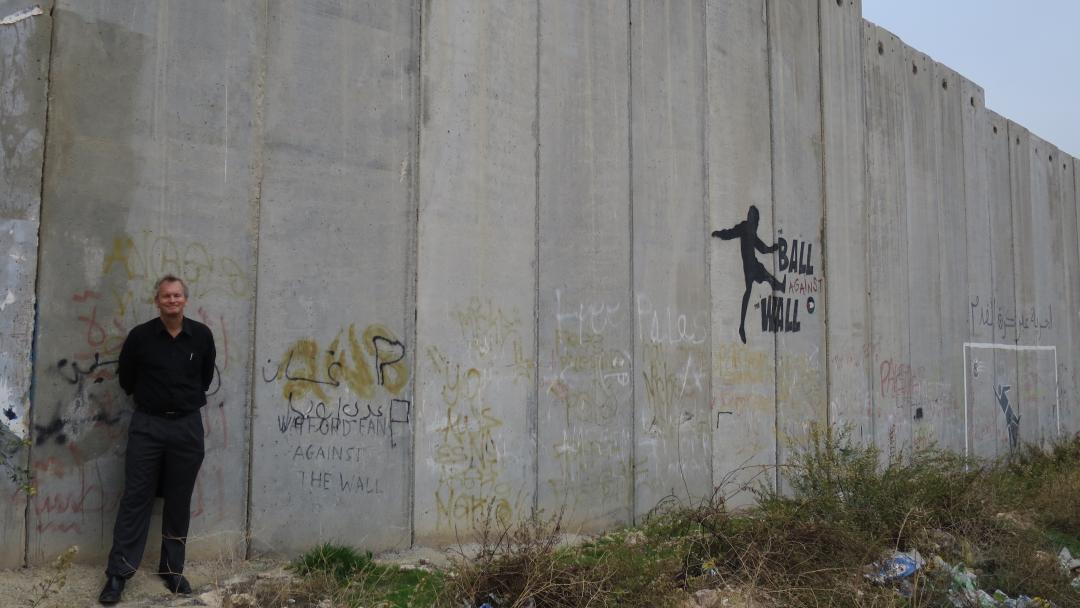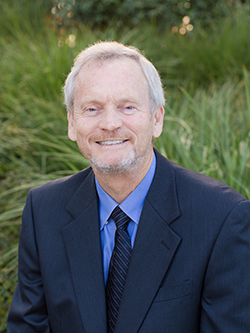
Professor Scott Bollens helps international peacemakers learn from conflicts
“By learning to not see the ‘other’, we gain urban anonymity and the illusion of privacy. Lost is the shared enterprise through which we connect with one another.”
These lines of poetry by Scott Bollens, professor of urban planning and public policy, appear in one of his books alongside a photo of Jewish and Muslim men carefully ignoring each other as they cross paths in Jerusalem. For more than 25 years, Bollens has been drawn to places like Beirut, Johannesburg and Bosnia to study how national, ethnic, and political conflicts play out in people’s day-to-day lives.
“The key to understanding these conflicts is considering each side’s perspective, and how they see the world,” says Bollens
Bollens’ recently published paper in Urban Affairs Review reveals just how tricky it can be to implement national policies in major cities. Focusing on Jerusalem and Northern Ireland’s capital of Belfast, Bollens interviewed 122 officials, policy makers and community organizers to understand how national policies were implemented on the ground.
“What we’ve learned is that when national political goals are put into action in cities, they are often ineffective or even counterproductive,” says Bollens. “It doesn’t matter whether a national goal is contrary or consistent with peace, it is going to encounter trouble when it hits the turf.”
In 1980, the Jerusalem Law sought to officially make the city the capital of the Israel, and aimed to maintain a 70% Jewish population to help assert sovereignty over the area. But over the years, the percentage of Arabs in the city has grown, with tens of thousands now living within the city limits, but just outside the separation barrier that Israel built for security. In East Jerusalem, new construction flourished, even though the buildings were not licensed by the state of Israel. Today, as much as one-third of the housing units in Jerusalem where Palestinians live are considered unauthorized.
In Northern Ireland’s capital city Belfast, surprisingly similar realities play out, complicating national goals. The 1998 Good Friday Agreement explicitly stated a desire to bringing peace, equality, and good relations between Catholic and Protestant sectarians. The government went so far as to declare that “separate but equal is not an option.” Yet Bollens finds that today the two sides remain both residentially separate and psychologically detached. A total of 99 “peace walls” stretching 12 miles divide Protestant and Catholic neighborhoods in the capital city of Belfast. Attempts to build shared community spaces inevitably lead to community wrangling. As the Catholic population grows more quickly due to higher birth rates, the need for new housing has outpaced available space -- yet no one dares to build new homes for Catholics on the Protestant side of the city.
That century-old conflict has taken center stage in recent debates about Brexit, since Northern Ireland is part of the United Kingdom and shares a border with Ireland, which remains in the European Union.
 “The last thing that traumatized Northern Ireland needs is the re-imposition of a ‘hard’ border between it and the Republic of Ireland, and that is just what the chaotic Brexit process is threatening to do. That border, formerly patrolled by the British Army and monitored by opposing paramilitaries during the years of civil war, is now threatened by the possibility of economic and customs checkpoints.”
“The last thing that traumatized Northern Ireland needs is the re-imposition of a ‘hard’ border between it and the Republic of Ireland, and that is just what the chaotic Brexit process is threatening to do. That border, formerly patrolled by the British Army and monitored by opposing paramilitaries during the years of civil war, is now threatened by the possibility of economic and customs checkpoints.”
While Bollens’ research focuses on high-conflict urban areas, the truth is that the local realities of politically conflicted areas can be found in cities everywhere.
“While Belfast and Jerusalem are extremes, we see patterns of hypersegregation, and place-based inequalities in every urban area, including in the U.S.,” says Bollens. “It’s not difficult to adapt recommendations in the cities I study to many urban areas all over the world.”
Bollens has been able to travel to conflict-ridden urban flashpoints and conduct interviews thanks largely to the Warmington family, who named the endowed chair which he holds: the Drew, Chase and Erin Warmington Chair in the Social Ecology of Peace and International Cooperation. Bollens leverages the research funding for the chair with year-long sabbaticals to spend extended periods of time abroad getting to know the cities and the people.
“I honor and respect the people I interview by showing that I know something about them, by reading local newspapers and getting inside their heads,” says Bollens. “That respect opens doors, and then I’m able to learn how humans act in traumatic conditions.”
Fortunately, international peacemakers are paying attention to Bollens’ work. He has been called on to share his research in Germany and Vienna, consulted with an NGO working on Afghanistan, and worked with the U.S. State Department and RAND Corporation, among others. Recently, UN-HABITAT, an arm of the United Nations focused on housing and settlements, called on Bollens for advice as they begin planning to rebuild war-torn Syria.
“The good news is that the UN is aware of the need to have an urban-focused recovery program, and to think differently about how to rehabilitate cities that are torn apart by conflict,” says Bollens. “That’s the hope for the future, that we learn from the mistakes of the past.”
— by Christine Byrd